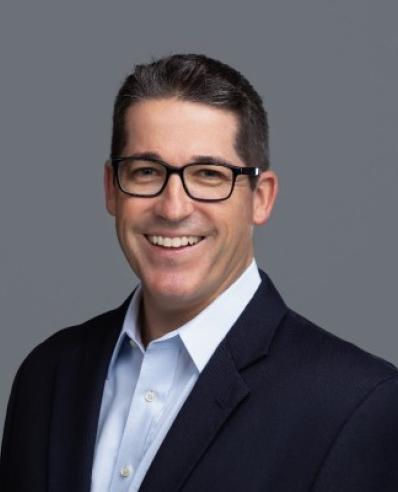The big picture: The role of the CHRO is continually shifting and transforming. Boards are looking to them to answer questions about talent strategy and organizational culture in today’s tightening labor market.
Why is it important? HR leaders must continually add new skills, reshuffle priorities, foster new relationships and redefine themselves in response to global talent trends, marketplace realities, and their organization’s evolving strategic objectives.
___ ____ ___
How can CHROs gain a seat at the C-suite decision-making table? That well-worn question tends to surface one of two follow-up inquiries:
- Why are we still asking this question in 2024?
- Who’s asking?
Leaders within organizations in which CHROs have long held seats at the senior decision-making table tend to ask follow-up question #1. (And HR leaders in those companies have more pressing matters to address.) Executives in organizations that have yet to imbue their senior HR leader role with full-fledged C-suite status should ask the second follow-up question, “Who’s asking?” When they do, they’ll discover that more boards of directors and shareholders recognize the pivotal people-related components of strategic decisions – and are calling for the elevation of the HR leader to the executive suite. Boards are also asking more (and more pointed) questions about talent strategy and organizational culture in light of tightening labor markets.
We firmly agree with those corporate directors. Every major strategic decision – regardless of whether it relates to global growth, M&A activity, succession planning, investments in AI and other game-changing technologies, or the launch of new product lines – features a massive people component with make-or-break consequences: Do we have enough talent and the right skills? Can our workforce manage this change? Does our culture foster the behaviors needed to achieve our strategic goals? Are our compensation and performance management programs – not to mention our entire HR strategy – aligned with where our company needs to be in five years? A systemic, long-term talent shortage poses additional hurdles as C-suite leaders and CHROs address these high-stakes human capital variables.
Post-Pandemic CHRO Priorities
A more productive question to ask is: How is the CHRO’s job evolving today?
CHROs today have an impact across the organization. They need to understand all areas of the business, stay close to the business, and anticipate the needs of the business. This is important for several reasons. CHROs help leaders within the organization determine which skills they need to meet their business objectives and develop a plan to acquire those skills, whether by partnering with learning and development to build the skills within existing staff, working with recruiting to acquire the skills, or working with a third-party consulting or managed services provider. HR also needs to help managers become better people managers. This skill isn’t necessarily inherent in new managers, and it is more dynamic and fluid than ever given the hybrid/remote work environment and the need to successfully manage a multigenerational workforce.
It is important to recognize that multiple factors are driving the transformation of the CHRO role. Due to the long-term talent shortage, highly skilled professionals hold more sway in the employer-employee dynamic. Hard to find talent increasingly wants to work for purpose-driven organizations whose values align with theirs, and they’re more likely to jump ship as soon as their employee experience deteriorates. Gen Z, the world’s first digital generation, now comprises more than 11% of the current U.S. workforce and 37% of the global workforce, which surpasses millennials and Gen X. As Gen Z’s representation in the workforce climbs, organizations must adapt their workforce strategies to better understand, attract and retain these employees.
These and other workforce trends combined with emerging technologies and high levels of external volatility are forcing HR leaders to:
- Make HR more digital, personalized and transparent: Traditional blocking-and-tackling activities – HR operations, payroll, total rewards and compliance – remain necessary, but they are no longer sufficient. Forward-looking HR leaders are reinventing and redesigning the core HR operating model by leveraging new technologies (e.g., predictive AI), methodologies (design thinking) and measures (internal net promoter scores). Constructing these next-generation “people functions” requires CHROs to instill new mindsets (HR helps drive business results) throughout their groups, anticipate changing business needs and their talent implications, and continually build trust and confidence throughout the business via candid, transparent communications on pay equity, decision-making rationales, succession planning and leadership development.
- Update legacy HR systems while embracing advanced technologies: Large HRIS systems and other legacy technology investments made five to 10 years ago remain underutilized today, and many organizations continue to pay for functionality and features that are not being used. Running HR like a business requires CHROs to simultaneously modernize legacy systems and make savvy investments in cutting-edge tools that can generate outsized returns. (Both of these technology-related actions also give HR leaders more time to devote to strategic talent management activities.) Traditional workforce planning and performance management solutions are being replaced by more advanced tools for self-assessment, manager affirmations, and employee sentiment tracking. AI-powered applications can help model future headcount fluctuations based on absentee rates, engagement figures, productivity data and related inputs. New workforce planning and design software can give HR groups more accurate, detailed and real-time views of all of the skills that reside throughout the enterprise.
- Coach up (and across): In some talent-savvy organizations, the CEO serves as the de facto chief recruiting officer while taking on a highly visible role in leadership development activities. In these companies, CHROs regularly coach the CEO – and the rest of the executive team – on people matters. Top CHROs help their boss and colleagues develop the knowledge, skills and emotional quotient (emotional intelligence) needed to thrive as leaders today and tomorrow. This is no small task given the fact that the skills, experiences and mindsets that helped propel these leaders to their current position may not do the same for future leaders, who need to develop additional competencies.
- Nurture C-suite and board relationships: Leading CHROs maintain an ongoing dialogue with their CFO, CIO, legal counterparts and other senior executives. As the use of generative AI (GenAI) applications exploded in the past 12 months, forward-looking CHROs are increasingly working with their legal officers to parse the technology’s data privacy and security risks and then make the workforce aware of Gen AI’s potential and its need for governance guardrails. CHROs also build board relationships, and particularly close ties with both the management and board compensation committees, whose work has far-reaching implications on succession planning, leadership development and talent management more broadly.
- Embrace data-driven storytelling: In addition to leveraging data and analytics to execute talent strategies, CHROs should use data to strengthen the narratives they share with the board. When boards ask questions about culture and talent, HR leaders should have analytics and insights that illustrate and animate their concise and compelling responses. Savvy HR leaders recognize that talent-related actions shape the overall narrative on organizational culture – and that risks arise when these stories run counter to C-suite decisions and pronouncements regarding the culture.
CHROs who long ago secured a seat at the senior decision-making table understand that the price of admission is continual change and ongoing transformation. There’s no question that HR leaders must continually add new skills, reshuffle priorities, foster new relationships and redefine themselves in response to global talent trends, marketplace realities and their organization’s evolving strategic objectives.






